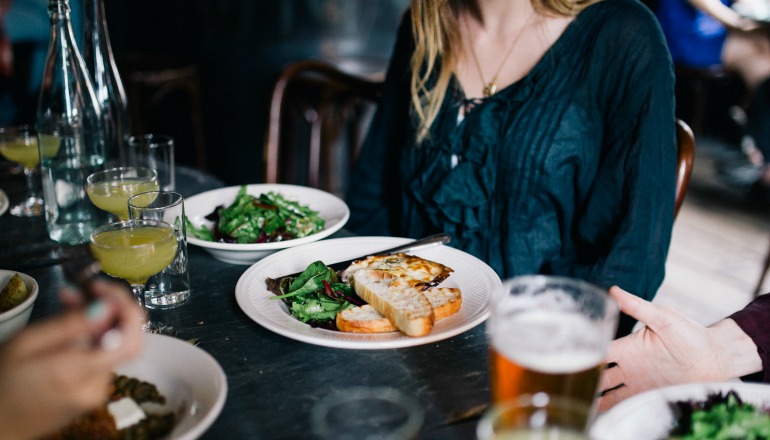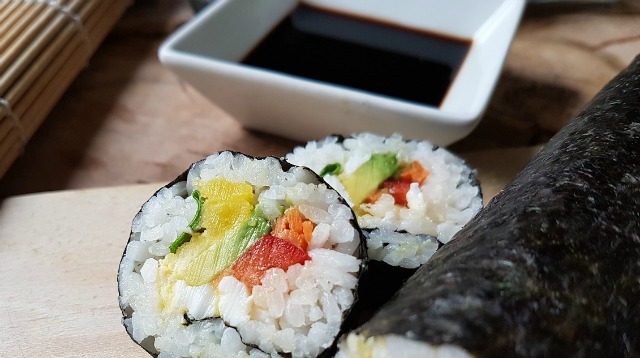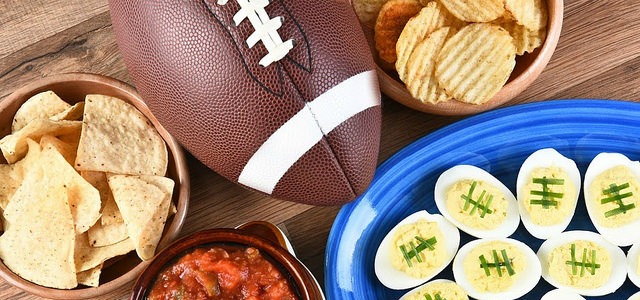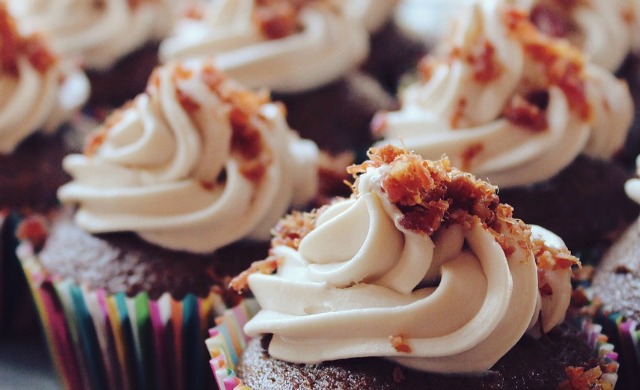
It seems like everyone is adopting a gluten- or grain-free diet these days. Whether it’s to combat the ravaging effects of an autoimmune disease, shed those last stubborn pounds, train for an athletic event, or simply avoid common chemicals and pesticides, eliminating grains from the diet can offer a variety of health benefits.
But few people are fully prepared to face the challenges associated with the leap to a grain-free lifestyle.
Before you purge everything from your house that contains grain or is not certified gluten-free, ask yourself these seven questions. You’ll learn more about your priorities and goals in the process, and set yourself up for more likely success if you do indeed go grain-free.

1. Why Am I Doing This?
You will find yourself asking yourself this question over and over in the first few weeks of going gluten- or grain-free. Answering this question definitively and in advance will help you remind yourself of your “why” in the weeks to come.
The answer to this question will also dramatically affect your answers to the next six questions. Someone who is following an auto-immune protocol will have a much different answer than someone who is simply looking for a way to train harder. But no matter what your answer is, remember that your “why” is just as valid as anyone else’s.
2. Do I Know the Difference Between Gluten-Free and Grain-Free?
Gluten-free and grain-free are not necessarily synonymous. In fact, the typical gluten-free diet can contain large amounts of rice flour, potato starch, thickeners, and texture enhancers that are not necessarily a part of a performance-based eating plan. Conversely, grain-free lifestyles are inherently gluten-free since they avoid all grains in every form.

3. Do I Know What I’m Looking For?
Armed with your list of compliant and non-compliant foods, you head to the grocery store and begin loading your cart with fresh produce (fantastic!) and lean proteins (awesome!). You turn the corner down the canned goods aisle for chicken broth, pick up a container, and read the ingredient list.
Brewer’s yeast? Malt flavoring? What in the world are those?
The answer: hidden sources of gluten.
Shocking as it may be, some foods that you might assume are gluten-free contain ingredients that are actually hidden sources of gluten. A food product that contains spelt, farina, farro, or semolina (all wheat derivatives) would make it easy to spot gluten-full culprits. But brewer’s yeast and malt in all of its forms also contains gluten. So before you dive into your new eating plan, it’s important you educate yourself on the many hidden forms of gluten (hint: it’s not just in your food, either).
While details like this are especially important to know if you are going grain-free for an autoimmune disorder, it may not be as vital if you are aiming to shed a few pounds or train for an event. Which brings us to…
4. How Far am I Willing to Go?
As tempting as it is to jump in with both feet and eliminate all grains and gluten from your diet, you need to decide in the beginning how far you are willing to take this new lifestyle.
It’s one thing to kick bread, bagels, muffins, pasta, and flours to the curb, but how far are you willing to take it? Are you willing to accept that your soy sauce may contain wheat? Are you playing the Whole Life Challenge on Kickstart so you still eat corn tortillas and oatmeal, but eliminate flours, pasta and couscous? Depending on your answers, it may not be as important to purchase certified gluten-free corn tortillas and oats if you do not have a medical reason for avoiding gluten.
Just remember, your limits are dictated by your body, your desired outcome, and your health, and it is okay if your answers and parameters are different from someone else. It may even take some time and experimentation to determine what those actual limits are (which is basically what the Whole Life Challenge is for).
5. What Am I Willing to Compromise On?
This goes hand-in-hand with asking how far you are willing to go. As tempting as it is to say, “I will not compromise,” that is not the best way to set yourself up for success when starting your gluten-free or grain-free journey.
There will be compromises made and knowing ahead of time which ones are more acceptable and where you draw your personal lines will make it easier for you to make good choices when you are hungry and standing in front of the pantry. Are you willing to eat oatmeal that is not certified gluten-free because it may have been stored in silos that contained wheat at one point? Are you trying to go 100% grain-free but there are certain grains you know to have less of an impact on your body when eaten on occasion?
The answer to what your compromises can be will be different for everyone and will largely depend on your goal for making changes to your lifestyle (there’s that whole “knowing your ‘why’” thing again).

6. How Will I Navigate Social Situations?
Everyone has that one acquaintance who rolls his or her eyes at the mere mention of the words “grain-free” or “gluten-free.” Fortunately, most of us have learned to surround ourselves with positive friends who support us in our lifestyle choices.
But that does not make social situations any less awkward.
When it comes to being social, we tend to meet and mingle around food that is not necessarily in keeping with a gluten- or grain-free lifestyle. Watching a game with your buddies is generally equated with pizza, chips, and a whole lot of beer. Going to dinner usually involves a bread basket and dessert.
This means it’s on you to make these scenarios less awkward for yourself — and really for everyone else, too. The reason people “react” to other people’s nutrition choices usually has to do with insecurity and fear. We can help our friends and family not feel that way, while also creating success for ourselves by being prepared.
For example, you can volunteer to bring a grain-free dish to the watch party to share. And while you’re answering our original question about your “why,” you can also create a version of that answer to share with your coworkers, friends, and family. What will you say to them that will impart the importance of your lifestyle change without sounding condescending about their choices?
Having a plan will give you a chance to develop a response that will explain why you are not indulging. It will also increase your likelihood of making it through any social situation without completely falling off the wagon. Speaking of which…
7. What Do I Do When I Fall Off the Wagon?
Notice that says “if,” not “when.” Some people argue that creating a contingency plan is planning to fail. The truth is, making choices that fall outside your “plan” happens to everyone in the beginning — and sometimes later on, and sometimes even by choice.
For example:
- You realize after you’ve eaten something that you never checked the label.
- You are celebrating at a party where they’re serving your favorite dessert.
- You really just want a brownie with your glass of wine and it’s been forever.
- Or there is nothing you wouldn’t give for a plate of pasta.
Statistically speaking there will come a time when you make a choice that falls outside the parameters you have set for yourself. If you are not changing your eating habits because of an autoimmune disease, allergy, or other intolerance, then have a bite of that dessert or eat the brownie or indulge in a forkful or two of pasta and don’t beat yourself up over it.

What’s more important than that momentary choice is the bigger picture of what you’re accomplishing. In order to prevent the shame spiral that can sabotage so many of us, prepare yourself with some positive self-talk phrases, accept that this is where you are today, and plan for success at the next meal. (Because, in truth, sometimes it’s okay to eat all the candy.)
Now Get After It!
Once armed with the answers to these questions, you will be ready to begin your journey to better health through the food you eat. (Really, that’s true no matter what nutrition choices you’re making, not just when it comes to grain and gluten.) Launching on a grain-free or gluten-free nutrition plan may be difficult at first, but the results you experience could outweigh any passing inconvenience, social awkwardness, or frustration at the grocery store.
And don’t forget that everyone has different goals, reasons, desired outcomes, and tolerances for change. Your plan may be wildly different from someone else’s, you may fall down and get back up again over and over, you may come to a completely different conclusion about what’s right for you in the end — and that’s all perfectly okay.
Keep asking yourself the questions, keep practicing and experimenting, keep examining your results, and you’ll reach your goals.
Photo 3 by (CC BY 2.0) by USDAgov.



































